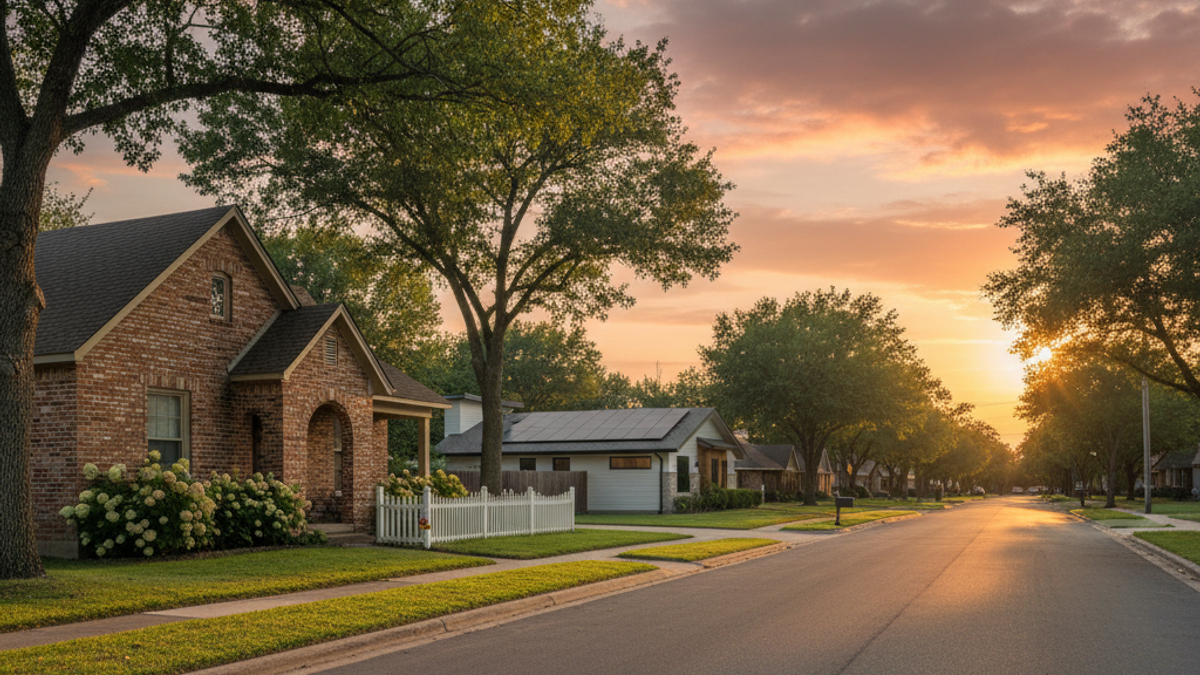You bought a place in Longwood, popped the bubbly, hung a few pictures, and now a question keeps sneaking into your mind during late-night Zillow scrolls: “Exactly how long should I stay put before I stick the FOR SALE sign in the yard?”
Stay too short a time and you miss out on tax breaks, equity, and appreciation. Hang on forever and you might miss a juicy price peak or the next chapter of life you really want. Below you will find a straight-shooting roadmap that breaks the decision into four pressure points—tax law, market rhythm, equity growth, and personal life triggers. By the end you will have enough clarity to decide your own sweet spot for selling in Longwood.
The Capital Gains Clock: Two Years That Can Save You Thousands
The federal tax code quietly dictates the very first number every Longwood homeowner should memorize: two years. Own and live in your primary residence for at least twenty-four months within the five-year window before closing day and you may exclude up to two-hundred-fifty-thousand dollars of gain if you file solo or half-a-million if you file jointly. Skip that mark and Uncle Sam can request a large slice of your profit.
Why this matters in real life:
- Longwood’s median sale price hovered near three-hundred-seventy-five-thousand dollars this spring, according to Stellar MLS data. Plenty of owners bought for markedly less only a few years back. If you locked in at two-hundred-fifty-grand during 2019, you could be sitting on one-hundred-plus thousand dollars in paper profit already. Without the two-year rule on your side, about one-fifth of that gain might get taxed at rates that can climb past twenty percent depending on your income bracket.
- The rule counts time, not consecutive months. You could occupy eighteen months, rent the home during an out-of-state work project, move back for another six, and still qualify, as long as the rolling five-year period captures two years of personal use.
- Military orders, health situations, and a few other curveballs can earn partial exclusions, but the paperwork gets thorny fast. Better to cross the two-year finish line unless life truly demands an earlier sale.
A practical timeline formula many Central Florida owners adopt goes like this:
Year 0 to 2
Focus on settling in, finishing upgrades, and meeting the homestead exemption filing deadline by March first.
Year 2 to 5
Recheck the homestead exemption each January, track comparable sales, and bank those equity gains. Selling any time during this stretch usually means tax freedom.
Year 5+
The exclusion still applies until year five ends. After that, the clock resets. Sell after year five and you will need two fresh years of occupancy to claim the break again.
I have walked dozens of Longwood clients through calendar math that saved them forty grand or more in federal taxes. Chat with a licensed tax professional so your personal details line up. The rules are steady yet your income, marital status, and recent property transactions can flip the outcome.
Reading Longwood’s Market Pulse
Tax perks tell you the minimum, not the ideal. Next comes the local market drumbeat. Longwood does not march exactly in step with Metro Orlando or statewide patterns. Here is a snapshot drawn from MLS reports, county records, and a handful of local lenders who open their books for me once a quarter.
Price Trajectory
Five years ago the median sold price in Longwood sat near two-hundred-thirty thousand. Fast-forward to today, the figure is flirting with four-hundred thousand, an annualized gain just over eleven percent. The surge slowed in late 2022 when mortgage rates spiked past seven percent, yet by spring 2024 prices bounced again as inventory tightened.
Days on Market
Pre-pandemic listings averaged forty-five days before finding a buyer. That shrank to nine frantic days during 2021. Right now the average sits around twenty-three. The pace still favors sellers but grants them enough room to negotiate back-to-back closings without couch surfing between moves.
Seasonality
Late winter and early spring usually post the highest number of active buyers. They want to settle before school resumes in August. If you list in January or February you can draw top-dollar attention. Inventory often swells in midsummer, nudging prices lower before they perk up again for year-end corporate relocations.
Interest Rates
Every one percent rise in a thirty-year mortgage rate trims roughly ten percent from the loan amount a typical borrower qualifies for. A leap from six percent to seven percent last summer reduced purchasing power, which briefly cooled bidding wars in Longwood. Watch the rate trend. A favorable dip can open the floodgates of pent-up demand and boost listing prices.
Hyper-local Sparks
SunRail’s Longwood Station, the new eateries popping up along Ronald Reagan Boulevard, and a steady pipeline of healthcare jobs centered around nearby Altamonte Springs keep demand resilient. Compare that with satellite communities thirty miles away where job centers are sparse and you will notice Longwood often rebounds earlier after a market lull.
What does this mix mean for timing? Many owners choose the three-to-five-year window because it overlaps the federal tax rule, aligns with recent appreciation curves, and lets them upgrade or repair without chasing a moving market. If numbers keep climbing at even half the previous pace, waiting an extra twelve months could net an additional fifteen-to-twenty thousand dollars in sale proceeds. On the flip side, a cooling forecast or a mortgage-rate jump might motivate a quicker exit.
Equity: The Hidden Superpower in Your Mortgage Statement
Equity is the gap between what your home is worth and what you owe. It grows two ways—principal payments whittle down the loan, and market appreciation lifts value. Longwood owners who secured three-percent thirty-year mortgages in 2020 have been treated to a double win: low interest means more of each payment hits principal early and soaring prices increase value.
Let us unpack those numbers with a simple scenario.
Starting Point
Purchase price: three-hundred-thousand dollars
Down payment: twenty-percent or sixty-thousand
Loan amount: two-hundred-forty-thousand
Month 1
Equity equals down payment since the house is still worth purchase price.
Year 2
You paid roughly ten grand in principal plus two years of typical appreciation at ten percent per year. Now the house might appraise near three-hundred-sixty-three-thousand. Your equity balloons to about one-hundred-thirty-three-thousand, more than double your initial cash outlay.
Year 5
Principal reduction can exceed thirty-thousand if you toss even small extra payments at the loan. Assume appreciation cools to six percent annually. Valuation climbs to roughly four-hundred-thousand. Equity now approaches one-hundred-ninety-thousand.
That is real leverage you can tap upon sale. It can:
- Cover the down payment on a larger home with space for a home office or bigger backyard.
- Pay off lingering student loans so the next phase of life starts debt-light.
- Fund a portfolio of rental properties if you are chasing passive income.
A bonus Longwood quirk: detached homes built in the seventies and eighties often rest on generous quarter-acre lots compared to the skinny parcels in many new subdivisions. Land tends to appreciate faster than square-foot living area, which gives older neighborhoods like Sweetwater Oaks and The Springs an edge. I have seen owners in those pockets watch their lot value outpace their brick-and-mortar structure in only a few years.
Check your amortization schedule. By year three you might discover that every mortgage payment chips almost as much at principal as interest, particularly if you snagged a low starting rate. That snowball accelerates equity.
When is equity “enough” to justify listing? There is no magic number, yet most financial planners suggest selling only when you can walk away with at least ten percent of the projected sale price after fees and taxes. On a four-hundred-thousand closing, that means clear proceeds around forty grand. That money cushions the transition and covers closing costs on the next purchase without tapping high-interest credit cards.
Personal Signals That Whisper, Sometimes Shout, “It Is Time”
Market stats and tax law set the stage, yet life often rewrites the script. Pay attention to these private indicators. I rank them in no particular order because everyone’s tipping point feels different.
- Commute Creep
Maybe you landed a dream gig in Lake Mary and the morning trek down Interstate 4 has morphed into an hour each way. Gas, tolls, and stress eat at quality of life faster than a spreadsheet shows. - Space Squeeze or Echo
Your household outgrew the square footage, or the reverse happened and half the rooms sit idle collecting dust. Either extreme signals mis-aligned housing costs. - Interest-Rate Lock-In
You carry a three-percent note and fear trading it for today’s six-plus percent rates. That is fair, yet some owners still move because their new salary, a co-borrower income, or a downsized loan balance keeps the monthly outlay reasonable. Do the math with a lender before assuming a move is unaffordable. - Maintenance Fatigue
Air-conditioning replacement, roof nearing twenty years, pool resurfacing—the list piles up. Selling before high-ticket maintenance hits can protect your budget. Buyers will still poke at inspection items, though fresh capital is their problem once they own the keys. - Lifestyle Goals
Travel more, simplify chores, harvest equity to launch a business. I recently helped a couple sell in Longwood after seven years because they wanted a van-life adventure across the national parks. The house had become an anchor, not a dream. Your endgame could be equally unconventional. - Local Sentiment
Longwood remains a tight community with festivals, parks, and backyard barbecues. If you still light up when you cruise down West Church Avenue on a Friday night, stay a while. If you feel restless and barely know the neighbors, that emotion is data too.
A quick self-audit can help:
- List three things your current home still does for you.
- List three things it holds you back from doing.
- Assign a value, emotional or monetary, to each.
- If the second list outweighs the first, place a tentative sale date on the calendar, even if it sits two years out.
So, How Long Should You Own a Home Before Selling in Longwood?
If you crave a single figure, four years often hits the sweet spot. It clears the tax hurdle, usually bags double-digit appreciation, lets equity mature beyond closing fees, and smooths over early life or career glitches that spark most relocations. Sell sooner only if personal circumstances yell louder than the math. Hold longer when low interest and fondness for the neighborhood keep happiness high.
Ready to crunch your own numbers? Pull the latest mortgage statement, hop on a valuation tool for a ballpark current price, and sketch out a simple profit estimate. Next, have a seasoned Longwood real-estate professional walk through your home to confirm that estimate and suggest any light touch-ups that could add five figures to your net. Loop in a tax advisor for final confirmation on capital gains.
When those three pieces line up, you will no longer wonder “how long should you own a home before selling Longwood,” you will know. And you will walk into the next chapter confident that timing, not luck, put extra dollars in your pocket.





